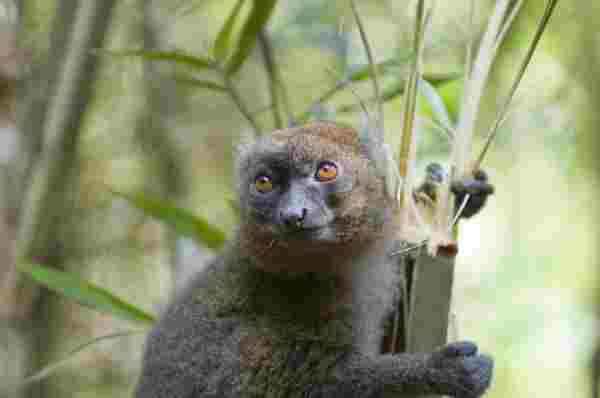Madagascar, often referred to as the eighth continent, is a land of awe-inspiring biodiversity and ecological wonder. Nestled in the Indian Ocean, this island nation boasts an astonishing array of flora and fauna, with a staggering percentage found nowhere else on Earth. The vibrant tapestry of Madagascar’s wildlife is a testament to millions of years of isolation, evolution, and adaptation.
From the charismatic lemurs, and captivating chameleons, to peculiar tenrecs and vibrant insects, Madagascar is a treasure trove of unique and often bizarre creatures. In this article, we embark on an enthralling journey, venturing into the heart of Madagascar’s wildlife, exploring the diverse habitats that nurture these fascinating beings, and discovering the incredible adaptations that have earned them a place in the pantheon of Earth’s extraordinary creatures. Join us as we uncover the mysteries and unveil the unparalleled beauty of the animals of Madagascar.
Table of Contents
Overview of Madagascar’s Unique Biodiversity and Isolated Ecosystem:
Madagascar, often termed the “eighth continent,” stands as a beacon of unparalleled biodiversity. Situated off the southeastern coast of Africa, this island nation is a crucible of evolutionary marvels. What sets Madagascar apart is its splendid isolation, fostering the evolution of unique and endemic species found nowhere else on Earth. The island is famed for its diverse array of flora and fauna, including lemurs, a variety of chameleons, unusual insects, and countless plant species.
The delicate dance of co-evolution between the island’s ecology and its inhabitants has created a spectacle of life that continues to captivate scientists and nature enthusiasts alike. Exploring the secrets of Madagascar’s biodiversity unveils not only the island’s evolutionary wonders but also underscores the urgency of conservation to preserve this biological treasure trove for future generations.
Lemurs (Various species):
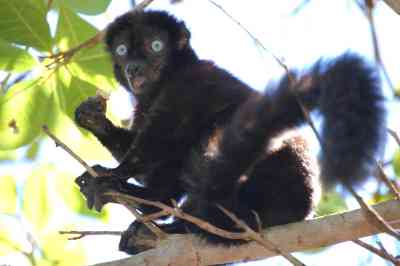
Lemurs, endemic to Madagascar, are a diverse group of primates known for their unique evolutionary path. With their distinctive wide-eyed gaze and bushy tails, lemurs come in various species, from the iconic ring-tailed lemur to the acrobatic sifakas. Their arboreal lifestyle, social behaviors, and vocalizations make them stand out in the animal kingdom. Sadly, many lemurs are endangered due to habitat loss and hunting, emphasizing the need for conservation efforts to protect these charismatic creatures and their precious ecosystems.
Aye-aye (Daubentonia madagascariensis):
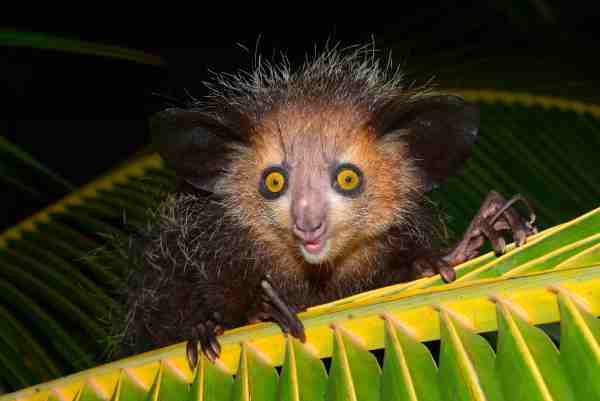
The aye-aye, a fascinating and enigmatic primate native to Madagascar, is renowned for its peculiar appearance and behavior. This rare lemur possesses an elongated, skeletal finger that it uses to extract insects from crevices. Despite being misunderstood and often viewed as an omen, aye-ayes play a vital role in their ecosystem by aiding in insect control and seed dispersal. Unfortunately, habitat loss and superstitions have led to the aye-aye being critically endangered, highlighting the urgency of conservation initiatives to ensure their survival.
Fossa (Cryptoprocta ferox):

The fossa, often dubbed the “cat-like carnivore” of Madagascar, is a unique and elusive predator. Resembling a blend of a cat and a mongoose, the fossa is the largest carnivorous mammal on the island. It roams the treetops and forest floors in search of lemurs, birds, and small mammals for its diet. Despite its cat-like appearance, it is more closely related to the mongoose family. Due to habitat loss and hunting, the fossa’s population is at risk, underscoring the importance of conservation efforts to preserve this remarkable and crucial predator in Madagascar’s ecosystems.
Madagascar Hissing Cockroach (Gromphadorhina portentosa):

The Madagascar Hissing Cockroach, a large insect native to the island, is both fascinating and notorious for its distinctive hissing sound produced when disturbed. Despite its intimidating appearance, this cockroach is harmless to humans and serves as a crucial part of Madagascar’s ecosystem by aiding in the decomposition of organic matter. Their remarkable ability to thrive in diverse environments, including captivity, has made them a subject of study and fascination. Due to their hardiness and relative ease of care, they are often kept as exotic pets and serve an educational role, showcasing the wonders of insect life to enthusiasts and learners alike.
Chameleons (Various species):

Madagascar is a chameleon haven, hosting an array of these iconic reptiles. Chameleons are renowned for their distinctive features, including independently mobile eyes, prehensile tails, and the ability to change color for communication and camouflage.
From the vibrant panther chameleon to the large Parson’s chameleon, each species showcases unique colors, patterns, and adaptations, making them a symbol of Madagascar’s biodiversity. Their specialized habitats, from rainforests to arid regions, highlight their adaptability to diverse environments. Despite their intriguing characteristics, chameleons face threats due to habitat loss and the illegal pet trade, necessitating conservation efforts to protect these mesmerizing creatures.
Tomato Frog (Dyscophus spp.):

The Tomato Frog, native to Madagascar, is a captivating amphibian known for its striking coloration resembling a ripe tomato. These vibrant hues act as a warning to potential predators of its toxicity. Despite its appealing appearance, it secretes a mild toxin when threatened.
Due to habitat loss and collection for the pet trade, the Tomato Frog faces threats to its survival, emphasizing the need for conservation measures. Its unique appearance and ecological role in insect control make it a valuable species, deserving of protection and appreciation within Madagascar’s rich biodiversity.
Madagascar Pygmy Kingfisher (Corythornis vintsioides):

The Madagascar Pygmy Kingfisher is a small, colorful bird endemic to the island, showcasing an array of vibrant hues. Their brilliant plumage, often a mix of blue, green, and orange, adds a splash of color to Madagascar’s lush landscapes.
This kingfisher relies on its sharp beak and exceptional hunting skills to catch insects, making it a vital component of the island’s ecosystem. Habitat loss and deforestation pose significant threats to their population, underscoring the importance of preserving their natural habitats and promoting conservation efforts to ensure the continued existence of this charming bird species.
Radiated Tortoise (Astrochelys radiata):

The Radiated Tortoise is a striking reptile native to Madagascar, easily recognized by its beautifully patterned shell resembling the sun’s rays. Sadly, this tortoise is critically endangered due to habitat destruction and illegal trafficking for the pet trade and traditional medicine.
As one of the world’s most endangered tortoise species, conservation efforts are crucial to protect this iconic creature. The Radiated Tortoise plays a vital role in its ecosystem by helping disperse seeds and aiding in plant growth, making its preservation essential for maintaining Madagascar’s ecological balance and biodiversity.
Madagascar Serpent Eagle (Eutriorchis astur):

The Madagascar Serpent Eagle is a raptor endemic to the island, showcasing exceptional hunting skills and a distinct appearance. With its keen eyesight and powerful talons, it preys on a variety of small mammals, birds, and reptiles.
Habitat loss and fragmentation, along with hunting, pose significant threats to this magnificent bird of prey. Conservation efforts are necessary to protect its habitats and ensure its continued presence in Madagascar’s diverse ecosystems.
Mouse Lemurs (Various species):

Mouse lemurs, the smallest primates in the world, are endemic to Madagascar and exemplify incredible diversity. These tiny nocturnal creatures have distinctive round faces, large eyes, and long tails. Mouse lemurs play a crucial role in seed dispersal, aiding in forest regeneration.
Habitat destruction, climate change, and hunting threaten their populations, making conservation efforts imperative. Studying these remarkable primates helps researchers understand not only their unique biology and behaviors but also the complex ecosystems they inhabit.
Leaf-tailed Geckos (Various species):

Madagascar is home to a diverse array of leaf-tailed geckos, characterized by their extraordinary camouflage resembling leaves. These masters of disguise blend seamlessly into their surroundings, making them challenging to spot. Their leaf-like appearance helps them evade predators and hunt insects at night.
Habitat loss and collection for the pet trade pose significant risks to these unique reptiles, necessitating conservation actions to protect their habitats and preserve their remarkable adaptations.
Madagascar Fish Eagle (Haliaeetus vociferoides):

The Madagascar Fish Eagle, a bird of prey endemic to the island, is an awe-inspiring species with striking plumage and impressive hunting skills. It primarily feeds on fish, swooping down to catch its prey from rivers and lakes.
Habitat degradation, hunting, and human activities pose significant threats to its population, emphasizing the need for conservation initiatives to safeguard this magnificent bird and its critical role in Madagascar’s ecosystems.
Madagascar Iguana (Oplurus cuvieri):
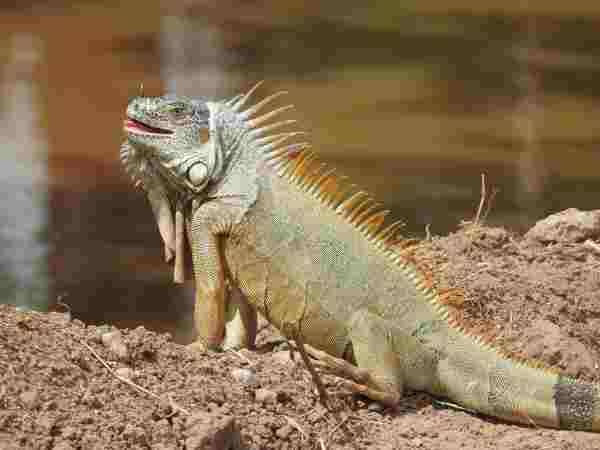
The Madagascar Iguana, also known as the collared iguana, is a distinctive spiny-tailed lizard endemic to the island. With its impressive spiny tail and robust body, it showcases a formidable appearance. These iguanas play a vital role in their ecosystem by controlling insect populations and dispersing seeds. Habitat loss and illegal pet trade activities pose threats to their populations, warranting conservation efforts to protect their natural habitats and ensure their survival.
Madagascar Harrier-Hawk (Polyboroides radiatus):
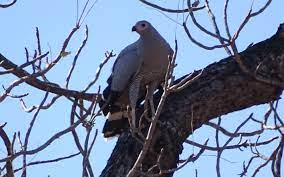
The Madagascar Harrier-Hawk, a bird of prey unique to Madagascar, is notable for its striking appearance and exceptional hunting skills. Its distinctive white plumage and piercing eyes make it easily identifiable. This harrier-hawk primarily feeds on small birds, rodents, and insects, playing a significant role in maintaining the balance of the island’s ecosystem. Habitat loss and human activities pose threats to its population, highlighting the importance of conservation efforts to preserve its habitats and protect this remarkable raptor.
Indri (Indri indri):

The Indri, often referred to as the “babakoto,” is the largest living lemur and a symbol of Madagascar’s unique biodiversity. With its distinct black and white markings, expressive eyes, and hauntingly beautiful calls, the Indri is highly recognizable. Unfortunately, habitat loss and hunting have led to a decline in their numbers, making them critically endangered.
Efforts to preserve the remaining forests of Madagascar and to raise awareness about the importance of conserving this iconic species are essential for their survival and for the overall health of Madagascar’s ecosystems.
Malagasy Giant Jumping Rat (Hypogeomys antimena):

The Malagasy Giant Jumping Rat is a fascinating and elusive rodent endemic to Madagascar. Despite its name, it does not jump like other rodents. Instead, it uses its powerful hind legs for propulsion and agility. Due to habitat loss and potential hunting pressures, this unique rat is considered vulnerable. Research and conservation efforts are vital to understanding its behavior, habitat requirements, and ecological role to develop effective strategies for its protection.
Madagascarophis colubrinus:

Madagascarophis colubrinus, also known as the Madagascarophis or Malagasyophis, is a nonvenomous snake native to Madagascar. It showcases a striking color pattern and is commonly found in a variety of habitats on the island. Despite its relatively mild nature and lack of venom, this snake plays a crucial role in the ecosystem by controlling insect and rodent populations, contributing to the delicate balance of Madagascar’s diverse wildlife.
Geographical and Ecological Characteristics of Madagascar:
Madagascar, the fourth largest island globally, boasts an astonishing array of geographical and ecological characteristics. Its diverse landscapes encompass dense rainforests, dry deciduous forests, spiny thickets, savannas, and high-altitude grasslands. The island’s unique geology, shaped by ancient tectonic movements, has given rise to its distinct ecosystems and diverse topography.
The central highlands, home to the majority of the human population, are characterized by breathtaking mountain ranges and fertile plateaus. The eastern rainforests, with their high levels of endemism, are a biodiversity hotspot. Madagascar’s geographic isolation and ecological diversity have culminated in an array of specialized species, making it an ecological wonderland and a prime location for scientific research and conservation efforts.
Biodiversity Conservation in Madagascar:
Biodiversity conservation in Madagascar is a critical and ongoing effort due to the island’s remarkable but fragile ecosystems. The country is renowned for its high level of endemism, yet it faces significant threats, including habitat loss due to slash-and-burn agriculture, logging, mining, and climate change impacts. Conservation initiatives aim to mitigate these threats through protected areas, reforestation efforts, sustainable land use practices, and community engagement.
National parks and reserves, such as Ranomafana and Andasibe-Mantadia, play a pivotal role in safeguarding Madagascar’s unique biodiversity. Collaboration between local communities, governmental agencies, non-governmental organizations, and the international community is vital for the success of conservation projects and the preservation of this extraordinary biodiversity for future generations.
Ecotourism and Responsible Wildlife Viewing:
Madagascar’s awe-inspiring biodiversity has positioned it as a prime ecotourism destination. Ecotourism, when practiced responsibly, not only generates revenue for the local economy but also supports conservation efforts and fosters environmental awareness. Responsible wildlife viewing encourages sustainable tourism practices, such as employing local guides, respecting wildlife habitats, and adhering to ethical behavior towards animals.
Ecotourism offers travelers a unique opportunity to witness the island’s charismatic wildlife while contributing to its preservation. By engaging with wildlife responsibly and supporting ecotourism initiatives, visitors can actively participate in the conservation of Madagascar’s rich natural heritage, ensuring a harmonious balance between tourism, the environment, and the island’s extraordinary inhabitants.
Final Words:
Madagascar, a jewel in the Indian Ocean, stands as a testament to the wonder and fragility of Earth’s biodiversity. Its unique evolutionary trajectory has bestowed upon it an astonishing array of life found nowhere else. However, this remarkable biodiversity is under threat, necessitating concerted conservation efforts and responsible tourism practices.
As we reflect on the unparalleled beauty of the animals and ecosystems of Madagascar, let us also embrace the responsibility to protect and preserve this ecological marvel. Together, as stewards of our planet, we can ensure that the splendor of Madagascar endures for generations, inspiring awe and fostering a deeper understanding of the precious tapestry of life on this magical island.
Reference:
- https://www.theleap.co.uk/10-fascinating-creatures-found-madagascar
- https://www.pbs.org/edens/madagascar/eden.htm
- https://www.folly-farm.co.uk/zoo/meet-the-zoo-animals/ring-tailed-lemur/

Rahul M Suresh
Visiting the Zoo can be an exciting and educational experience for all involved. As a guide, I have the privilege of helping students and visitors alike to appreciate these animals in their natural habitat as well as introducing them to the various aspects of zoo life. I provide detailed information about the individual animals and their habitats, giving visitors an opportunity to understand each one more fully and appreciate them in a more intimate way.

